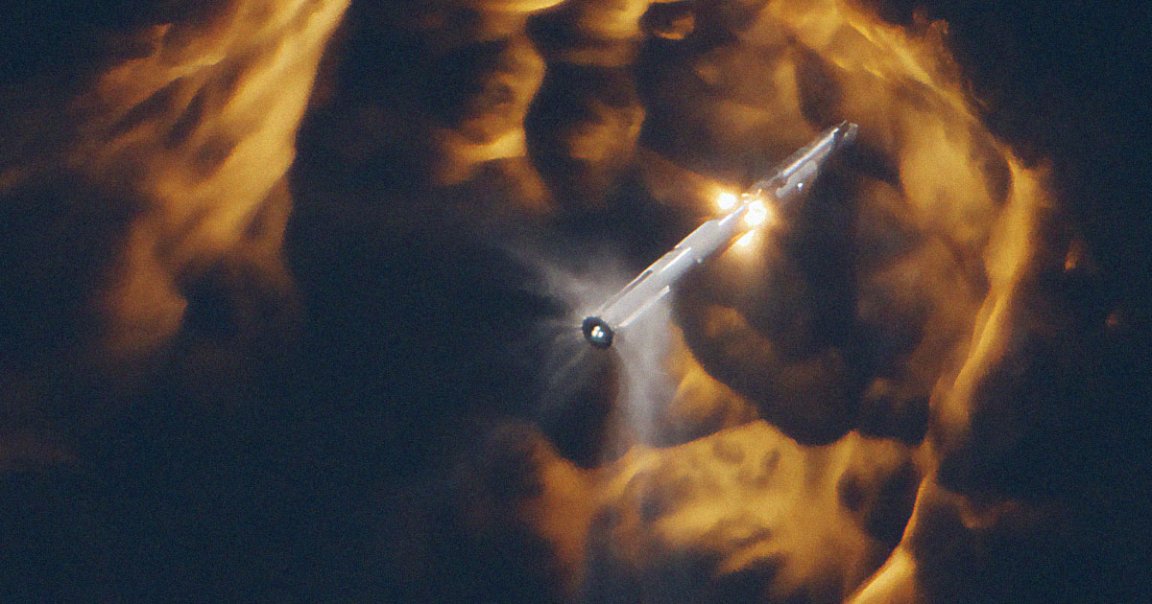
New Heights
Around seven months of orbital pad upgrades, governmental red tape, and an extensive environmental assessment later, SpaceX has launched its second orbital attempt of its massive Starship rocket.
The massive rocket roared into life at the company’s launch site in South Texas on Saturday, with its Super Heavy booster helping it to reach a new record height of 90 miles, well above the internationally agreed-upon edge of space.
Unfortunately, the rocket then exploded in spectacular fashion yet again — a very familiar sight by this point — ending the planned 90-minute mission prematurely.
Despite the “rapid unscheduled disassembly,” the company’s tongue-in-cheek terminology for a violent explosion, SpaceX is hailing the mission as a success.
That’s in large part due to the “successful stage separation,” a risky and complex maneuver, and that 33 of the rocket booster’s Raptor engines were all able to fire simultaneously for the first time.
At the same time, the clock is ticking and the company still has a lot to prove before Starship can return astronauts to the Moon, let alone travel to Mars.
“With a test like this, success comes from what we learn, and today’s test will help us improve Starship’s reliability as SpaceX seeks to make life multiplanetary,” SpaceX’s statement reads.
Fall RUD
The sheer forces involved were staggering. With dozens of massive rocket engines firing at the same time, the booster alone burned a whopping 40,000 pounds of fuel per second. That’s 17 million pounds of thrust, making it easily the most powerful rocket in the world.
However, the pressure is still on for SpaceX. NASA is hoping to leverage its massive rocket to send astronauts to the Moon in a matter of years as part of its Artemis program.
Fortunately, space agency officials are likely optimistic following the spectacle SpaceX put on over the weekend.
“We’d love to see it go off perfectly, but frankly, if it doesn’t, it’s still going to be a great learning event, and it still will give us progression on the schedule for the different flight tests, and then we’ll know the areas we need to more deeply penetrate,” Lisa Watson-Morgan, who manages NASA’s Human Landing System program, told Ars Technica last week.
Now, all eyes are on SpaceX as it gears up for its next attempt. Complicating matters is some intense scrutiny by regulators.
“The clock is ticking,” SpaceX investor Chad Anderson told Reuters. “NASA has a timeline where they’re trying to get to the moon, and this is their primary vehicle to do it. So SpaceX needs to deliver on a timeline.”
More on Starship: SpaceX Says Feds Are Being Unfair About Its Rocket That Exploded